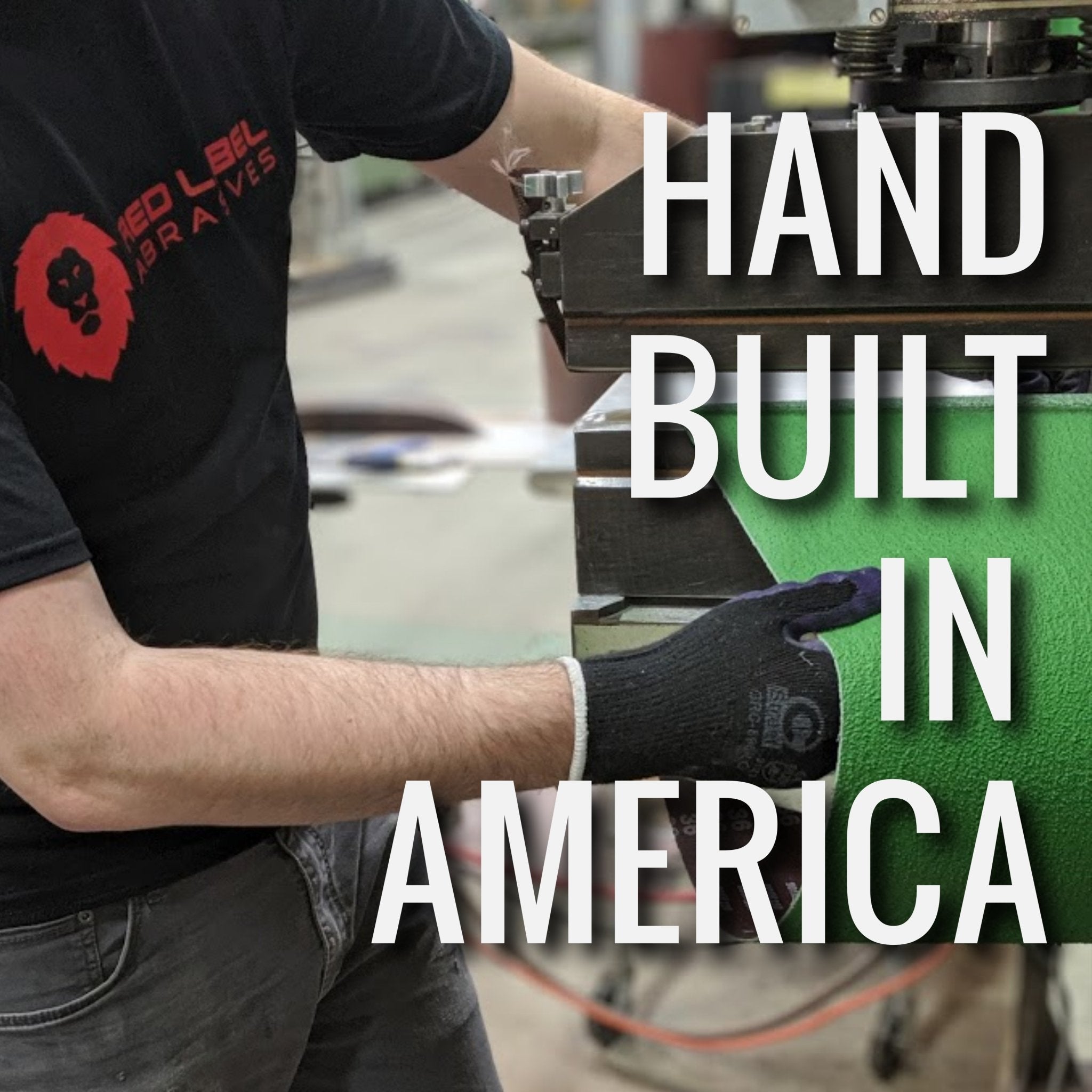Your Cart is Empty
Free Shipping over $150 (Excludes Oversized Products)
Free Shipping over $150 (Excludes Oversized Products)
Sanding Belts
Sanding Discs

Sandvik 12C27 Knife Steel: Pros & Cons
by David Kranker 10 min read

Quick Summary
Sandvik 12C27 is a Swedish stainless steel known for its balanced combination of toughness, corrosion resistance, and sharpening ease, making it a long-standing favorite for outdoor, kitchen, and utility knives. With moderate carbon (0.6%) and chromium (13.5%) content, it achieves a versatile hardness range of 54–61 HRC and maintains a fine, clean grain structure that resists chipping and sharpens easily. Its key strengths include durability, rust resistance, and accessibility, while its main drawbacks are moderate edge retention and limited wear resistance compared to modern powder steels.
The steel used to make a knife blade determines how long it stays sharp, how much care it needs, and how it feels when you use it. Some steels chase extreme hardness or edge life, but those gains can come with trade-offs that compromise durability and ease of sharpening. Sandvik 12C27 is different: it’s a stainless steel used for both custom and mass-produced knives due to its strong and consistent performance.
Sandvik 12C27 has been a fixture in outdoor, kitchen, and utility knives for decades. It sharpens cleanly, resists rusting, and holds an edge that’s more than adequate for daily cutting tasks. That said, it also has drawbacks when it comes to certain applications. In this guide, we’ll explain what Sandvik 12C27 is, its advantages and disadvantages, and where it fits among the many knife steels in use today.
What Is Sandvik 12C27?
Sandvik 12C27 is a stainless steel produced by Sandvik, a Swedish companynow known as Alleima. It was developed for blades that need fine edges and high corrosion resistance. Over time, it has become one of the most recognizable steels in Scandinavian knife making and has been widely adopted in both industrial and consumer blades.
The steel is part of Sandvik’s family of high-purity stainless alloys. It’s melted and refined to create a very clean grain structure, which helps it sharpen evenly and resist micro-chipping. This fine structure also contributes to its smooth cutting performance, making it a favorite for knives that see repeated use in wet or outdoor environments.
Sandvik 12C27 was originally used in razor blades before finding its way into outdoor and kitchen knives. Its ability to stay durable while keeping a keen edge makes it practical for carving, slicing, and general utility work. It’s not a new formula, but it remains popular because it delivers consistent results without demanding specialized equipment or extreme heat treatment methods.
Chemical Composition and Properties of Sandvik 12C27
Sandvik 12C27 has a carbon content of about 0.6 percent and a chromium content of around 13.5 percent. Smaller amounts of silicon and manganese are present to improve strength and stabilityduring heat treatment. Phosphorus and sulfur appear only in trace amounts, helping control grain size and ease of machining. This balance gives the steel a clean structure without large, brittle carbides that can weaken an edge.
The moderate carbon level allows 12C27 to reach hardness levels between 54 and 61 HRC, depending on how it’s treated. That range makes it hard enough to hold a sharp edge while staying strong enough to resist chipping. The chromium content provides stainless behavior, forming a protective oxide layer that limits rust and staining. Together, these traits make the steel easy to maintain in humid or outdoor conditions.
Compared with other stainless steels in its class, 12C27 favors strength and consistency over extreme edge retention. It doesn’t wear as slowly as high-vanadium or powder metallurgy steels, but it sharpens faster and holds a clean edge longer than softer alloys like 420HC. This balance of properties is what keeps it relevant for modern knife makers and users who want quality performance from a conventional stainless steel.
Heat Treatment and Hardness Range
Heat treatment has a major influence on how Sandvik 12C27 performs. The steel’s carbon and chromium levels allow it to respond well to controlled heating and quenching, producing a wide hardness range. When hardened to around 54–56 HRC, it shows excellent resilience and flexibility, which helps prevent edge chipping in outdoor and utility knives. At higher hardness levels of 59–61 HRC, edge retention improves, but the steel becomes slightly less forgiving under impact.
Manufacturers choose where to set that balance depending on how the knife will be used. A kitchen knife benefits from a higher hardness for longer edge life on softer materials, while a bushcraft or carving knife might use a slightly softer treatment to handle twisting or batoning without damage. This tunable nature gives 12C27 a versatility that suits both light and demanding cutting tasks.
Proper heat treatment also refines the steel’s microstructure, creating small, evenly distributed carbides that support sharpness and ease of sharpening. Even small differences in temperature control can affect its performance, so consistent processing is key. Well-treated 12C27 delivers a strong edge that’s easy to restore and stable during long use, which explains its continued popularity among both factory and custom bladesmiths.
Advantages of Sandvik 12C27
Sandvik 12C27 has remained popular for decades because it balances key performance traits without leaning too far toward one extreme. Its strength, corrosion resistance, and sharpening ability make it dependable in both professional and recreational settings. The following qualities explain why it continues to be used in everything from outdoor knives to food preparation tools.
-
Durability:Sandvik 12C27 maintains impressive resilience for a stainless steel. It can handle twisting cuts, light prying, and contact with harder materials without edge failure. This makes it suitable for outdoor knives and general-purpose blades that need to perform under varied conditions.
-
Corrosion Resistance:The steel’s chromium content protects it from rust and staining in damp or humid settings. Knives made from 12C27 can be used in kitchens, around water, or outdoors without frequent maintenance. A quick wipe after use is usually enough to keep the blade in good condition, even with minimal oiling.
-
Ease of Sharpening:Its fine grain structure allows quality cutting edges to form. Sharpening can be done with basic stones or guided systems, and the steel responds well tolight stropping. Users appreciate how it takes a clean, even edge without excessive effort, which encourages regular upkeep instead of long sharpening sessions.
-
Edge Stability:Although it doesn’t reach the hardness of advanced tool steels, 12C27 holds its edge well in normal cutting tasks. The edge tends to roll slightly instead of chipping when stressed, allowing it to be restored easily. This stability contributes to consistent cutting performance over time.
-
Versatility Across Knife Types:Sandvik 12C27 appears in pocket knives, fillet knives, carving tools, and kitchen blades. Its balanced profile lets manufacturers and makers adapt it to many designs without changing their production methods. It behaves predictably during grinding,polishing, and heat treatment, which simplifies manufacturing and maintenance alike.
-
Accessible Cost and Availability:Because it’s a conventional melt steel and not a powder metallurgy product, 12C27 remains affordable while offering dependable performance. It’s widely used in production knives, so replacement blades and sharpeners for it are easy to find. This helps both hobbyists and professionals keep their tools ready for work.
Drawbacks of Sandvik 12C27
While Sandvik 12C27 performs well across a range of uses, it does have limits that set it apart from newer or higher-alloy steels. These drawbacks don’t make it a poor choice, but they help define where it performs best and where other options might be stronger.
-
Moderate Edge Retention:Compared with higher-alloy stainless steels, 12C27 doesn’t hold an edge for extended periods under heavy use. Its lower carbon and carbide content limits wear resistance, so edges tend to lose bite sooner when cutting abrasive materials. Regular maintenance offsets this, but users who prefer longer intervals between sharpening may find it lacking.
-
Limited Wear Resistance:The fine-grain structure that improves toughness also reduces the number of hard carbides in the steel. This means surfaces wear more quickly when exposed to repeated friction or cutting through dense materials. For users who work with cardboard, rope, or fibrous materials, edge degradation can appear faster than in high-vanadium steels.
-
Restricted Hardness Potential:12C27 can reach a respectable hardness of about 61 HRC, but going higher risks reducing toughness beyond practical levels. This limits its performance in tasks that demand extreme edge stability or resistance to deformation. Knife makers seeking very high hardness levels tend to use steels with more alloying elements or powder metallurgy processes.
-
Perception as a Lower-Tier Steel:Because it’s been used in affordable production knives for many years, 12C27 is sometimes viewed as basic compared to modern premium alloys. That perception can lead users to underestimate its capabilities. While it performs well in real use, it lacks the marketing appeal of newer steels with exotic names or compositions.
-
Less Suitable for Heavy-Duty Applications:With cutting tools that face repeated impact or contact with hard surfaces, 12C27 can show fatigue over time. It handles light batoning or slicing well, but isn’t intended for chopping or sustained impact work. In those cases, tougher tool steels or higher-carbon options are better suited.
|
Category |
Advantages |
Disadvantages |
|
Strength |
Strong resistance to chipping and cracking, even under lateral stress. |
Not suited for heavy-impact use such as chopping or prying. |
|
Corrosion Resistance |
High chromium content provides good protection against rust and staining. |
Requires basic maintenance to prevent surface discoloration over long periods. |
|
Edge Retention |
Holds a usable edge for general cutting tasks and resharpens easily. |
Wears faster than high-alloy or powder metallurgy steels during abrasive cutting. |
|
Sharpening |
Easy to sharpen with standard stones or guided systems; forms clean edges quickly. |
Needs more frequent touch-ups compared to harder steels. |
|
Heat Treatment Flexibility |
Wide hardness range (54–61 HRC) allows tuning for toughness or edge life. |
Exceeding 61 HRC reduces strength and can cause brittleness. |
|
Versatility |
Performs well in kitchen, outdoor, and EDC knives; adaptable to various designs. |
Doesn’t reach the extreme performance levels of specialized steels. |
|
Cost and Availability |
Affordable and widely available for makers and users alike. |
May be perceived as entry-level due to its use in budget knives. |
Comparison with Similar Steels
Sandvik 12C27 is frequently compared to other stainless steels in the same hardness and price range. These comparisons help place it within the larger group of mid-level knife steels that aim to balance durability, corrosion resistance, and sharpening ease. While it doesn’t match the edge life of modern powder metallurgy alloys, it remains competitive against other conventional stainless options.
12C27 vs. 14C28N
14C28N is a later development from Sandvik that adds nitrogen to improve hardness and corrosion resistance. The difference is subtle but noticeable: 14C28N tends to hold an edge slightly longer and resist staining a bit better. However, 12C27 has a finer grain structure and can be tougher at similar hardness levels, which some makers prefer for outdoor knives.
12C27 vs. 440A
Both steels share similar chromium levels, but 12C27 contains a cleaner carbon composition and forms fewer large carbides. This gives it better edge stability and easier sharpening. 440A resists corrosion slightly more but is softer overall, making 12C27 a more balanced option for cutting performance.
12C27 vs. AUS-8
AUS-8, made in Japan, includes additional nickel and vanadium to enhance wear resistance. While AUS-8 holds an edge a bit longer, it can also be more difficult to sharpen back to a fine edge. 12C27 is stronger and easier to sharpen, which makes it suitable for field or kitchen use where quick maintenance is preferred.
12C27 vs. D2 Tool Steel
D2 provides higher carbon and chromium levels, leading to much greater wear resistance but lower corrosion protection. It also contains larger carbides, which can make it more brittle in thin edges. 12C27 trades some edge life for better durability, making it better for blades used in wet or outdoor settings.
12C27 vs. Modern Powder Steels
Steels like CPM S30V or MagnaCut outperform 12C27 in edge retention and wear resistance due to their refined carbide distribution and alloying elements. However, they’re more expensive and harder to sharpen. 12C27 remains a practical option for users who value consistency, simple maintenance, and a clean edge over maximum edge life.
Maintenance and Care Tips
Sandvik 12C27 is easy to maintain, which adds to its appeal for both professionals and casual users. Regular cleaning and light sharpening keep it performing at its best without specialized tools or products.
Following a few simple habits extends its lifespan and preserves its corrosion resistance. For example:
-
After each use, the blade should be wiped clean and dried. Although 12C27 resists rust, moisture, or food acids can still leave light stains over time.
-
A thin coat of mineral oil or silicone-based lubricant helps prevent oxidation if the knife will be stored for long periods or used near saltwater.
-
The steel responds quickly to fine abrasives, so only light pressure is needed to restore a sharp edge.
-
Regular stropping with aleather belt or canvas helps maintain the cutting surface between full sharpenings and keeps the edge smooth.
Recommended abrasives include:
-
Aluminum Oxide:Aluminum oxide works very well for sharpening and finishing 12C27. Because this steel has a fine, uniform carbide structure, it doesn’t require aggressive abrasives to shape or polish the edge. High-quality closed-coat aluminum oxide belts cut efficiently without removing excess material. It’s an ideal choice for most sharpening stages and is often used in powered belt systems for knife makers.
-
Silicon Carbide:Silicon carbide abrasives cut faster than aluminum oxide and can be useful when reprofiling a blade or removing chips. However, they wear down more quickly and can produce a rougher finish if not followed by a finer grit. Silicon carbide belts are best reserved for the early stages of edge repair and blade sharpening.
-
Ceramic:Ceramic abrasives are harder and longer-lasting, making them good for consistent metal removal and refining the edge. They maintain a flat surface and hold up under pressure, so they’re practical for professionals who sharpen frequently. Ceramic belts leave a smooth, refined finish on 12C27.
-
Zirconia:Zirconia combines strong cutting power with extended belt life. It’s ideal for production grinding or shaping before heat treatment. For post-heat-treat finishing, these abrasives can be used at lower pressure to avoid overheating the blade.
Craft Your Knives With Industrial-Grade Sanding Belts from Red Label Abrasives
Sandvik 12C27 has earned its place as a dependable stainless steel for knives that see regular, practical use. Its balance of toughness, corrosion resistance, and sharpening ease makes it a strong performer across many knife categories. While it doesn’t reach the edge life of modern powder steels, it offers predictable results and straightforward maintenance.
Red Label Abrasives supplies a full range of sanding belts that cover all stages of knife creation and maintenance. With the right abrasive sequence, 12C27 blades can be shaped and maintained more easily, ensuring the steel’s inherent toughness and edge stability remain intact through repeated sharpening cycles. If you have questions or would like to place an order, please fill out a contact form or call 844-824-1956 today.
ABOUT THE AUTHOR
David Kranker is a writer and creative maker who has been covering the abrasive and knife-making industries on the Red Label Abrasives Blog since 2020. David spends his time continually researching sanding and bladesmithing to provide readers with the latest and greatest information. In his free time, David utilizes abrasives for many different home and auto projects at his home in Delton, MI.
Belt Packs Made For Knife Makers
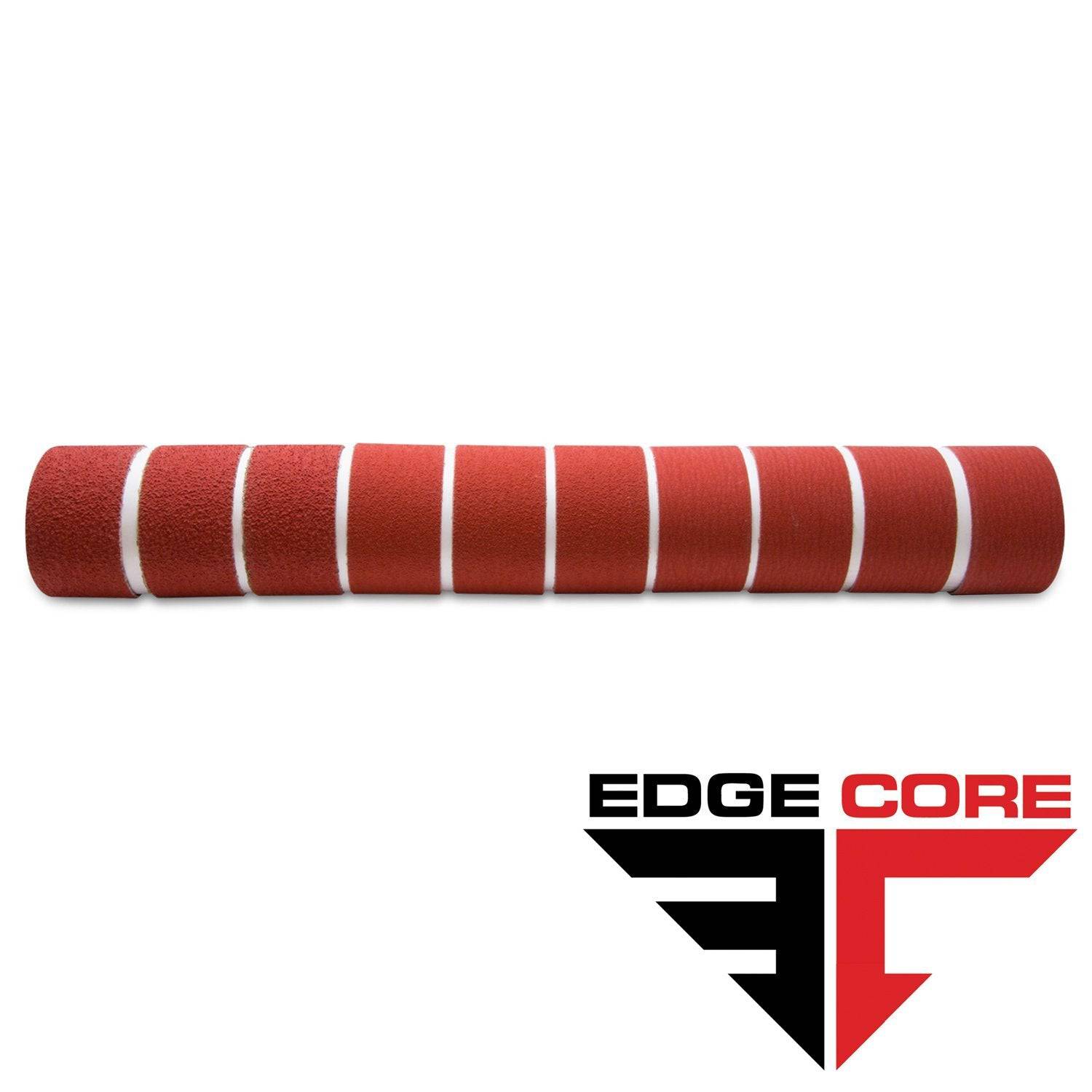
2 X 72 Inch Knife Makers Sanding Belts Assortment

2 X 60 Inch Knife Makers Sanding Belts Assortment
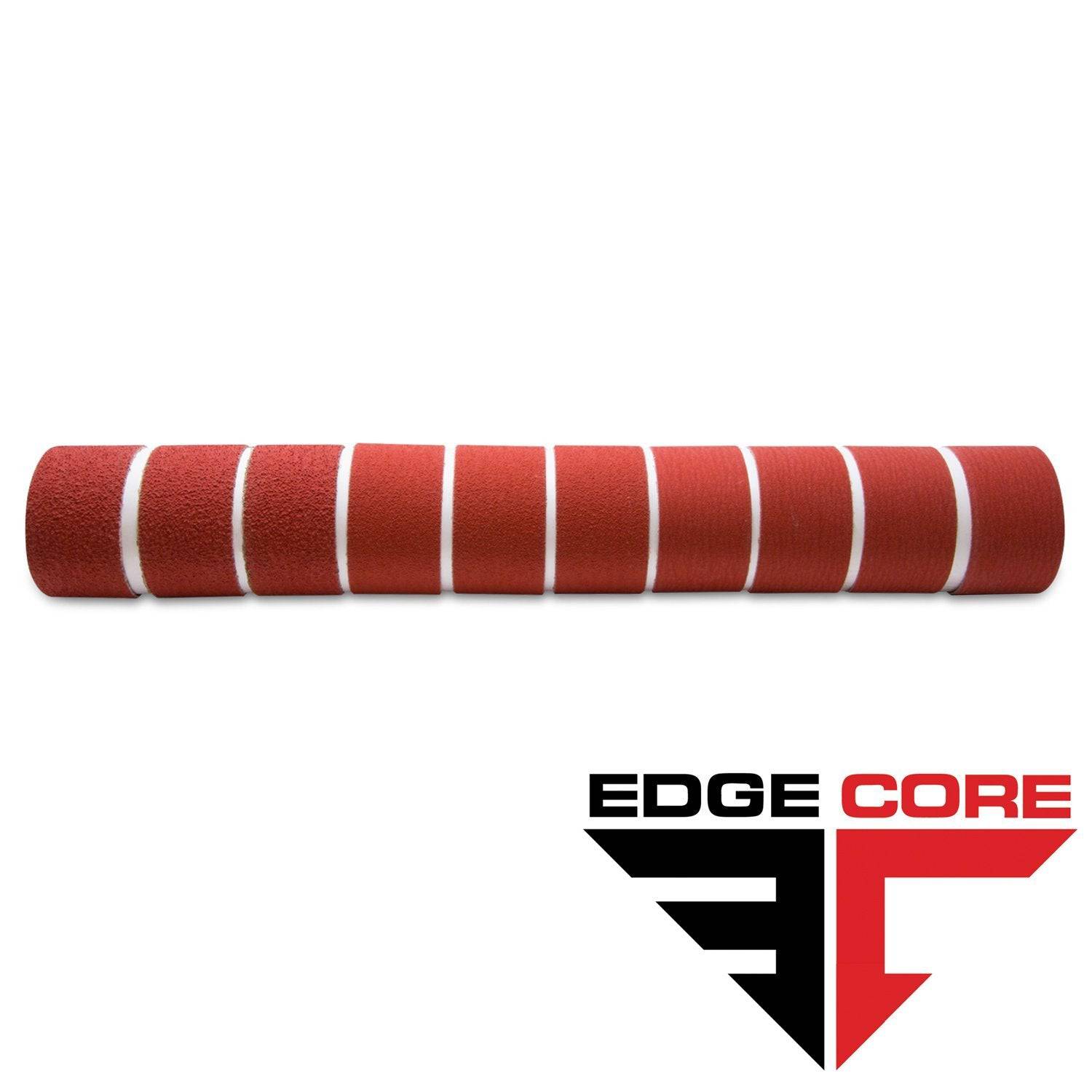
2 X 48 Inch Knife Makers Sanding Belts Assortment
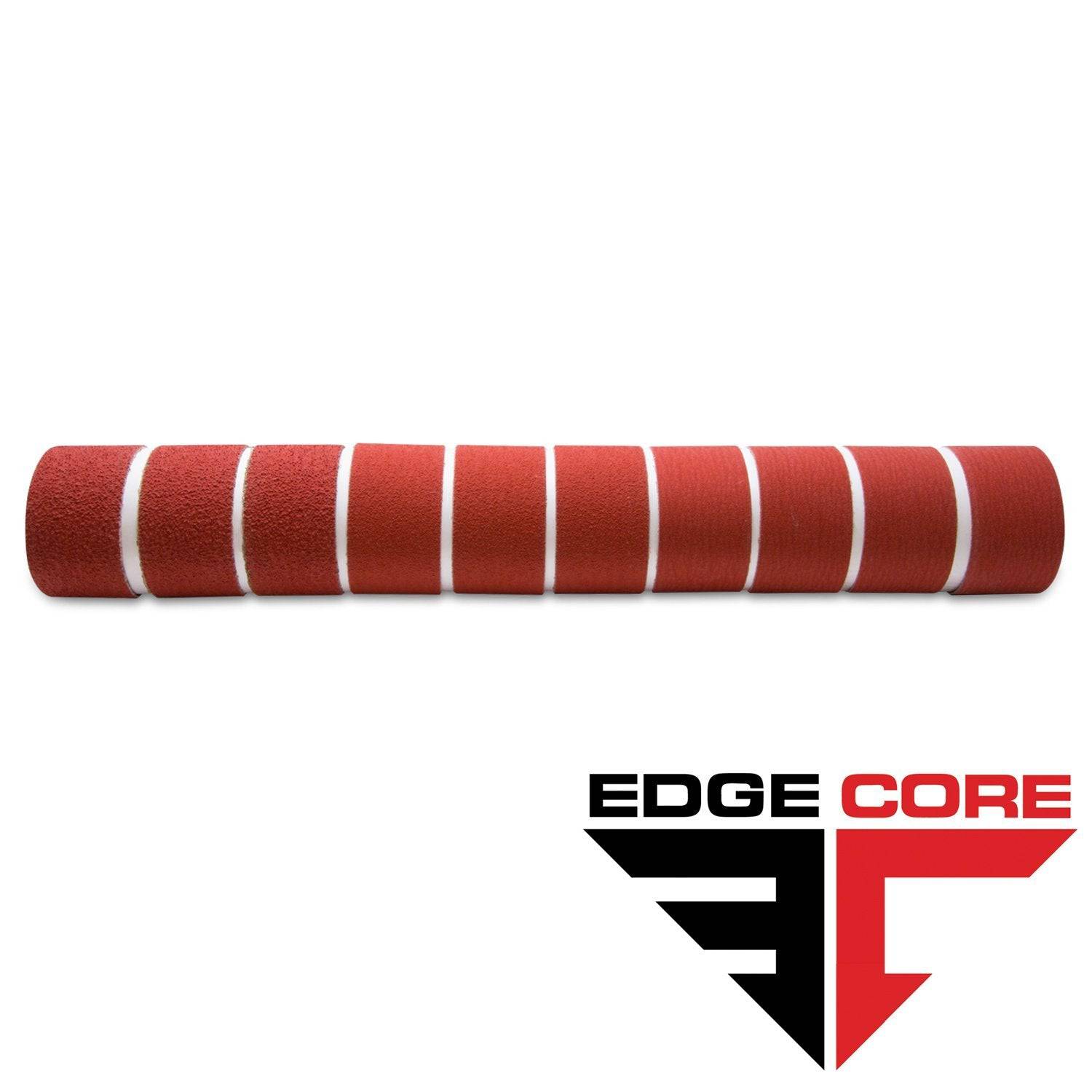
2 X 36 Inch Knife Makers Sanding Belt Assortment
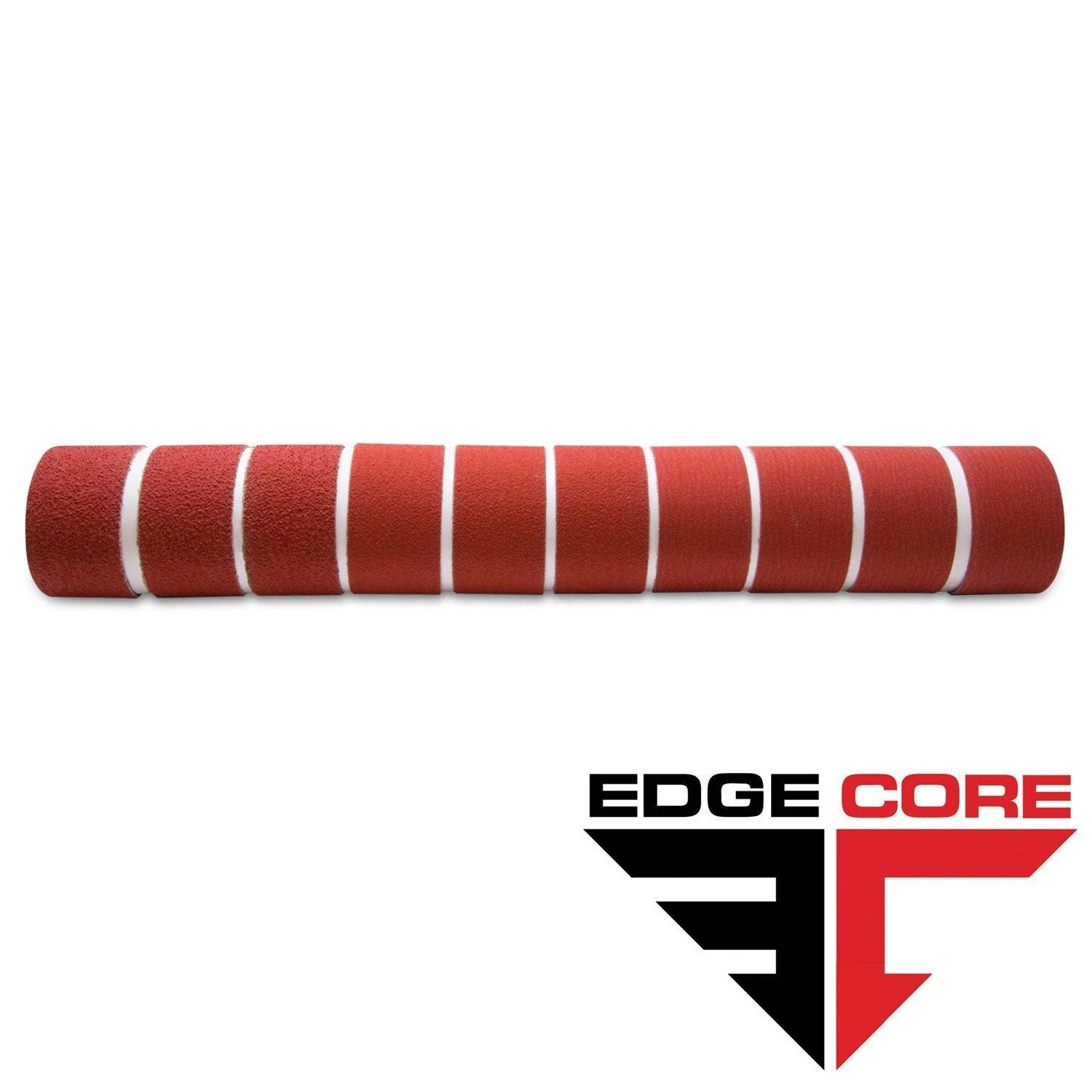
2 X 42 Inch Knife Makers Sanding Belts Assortment
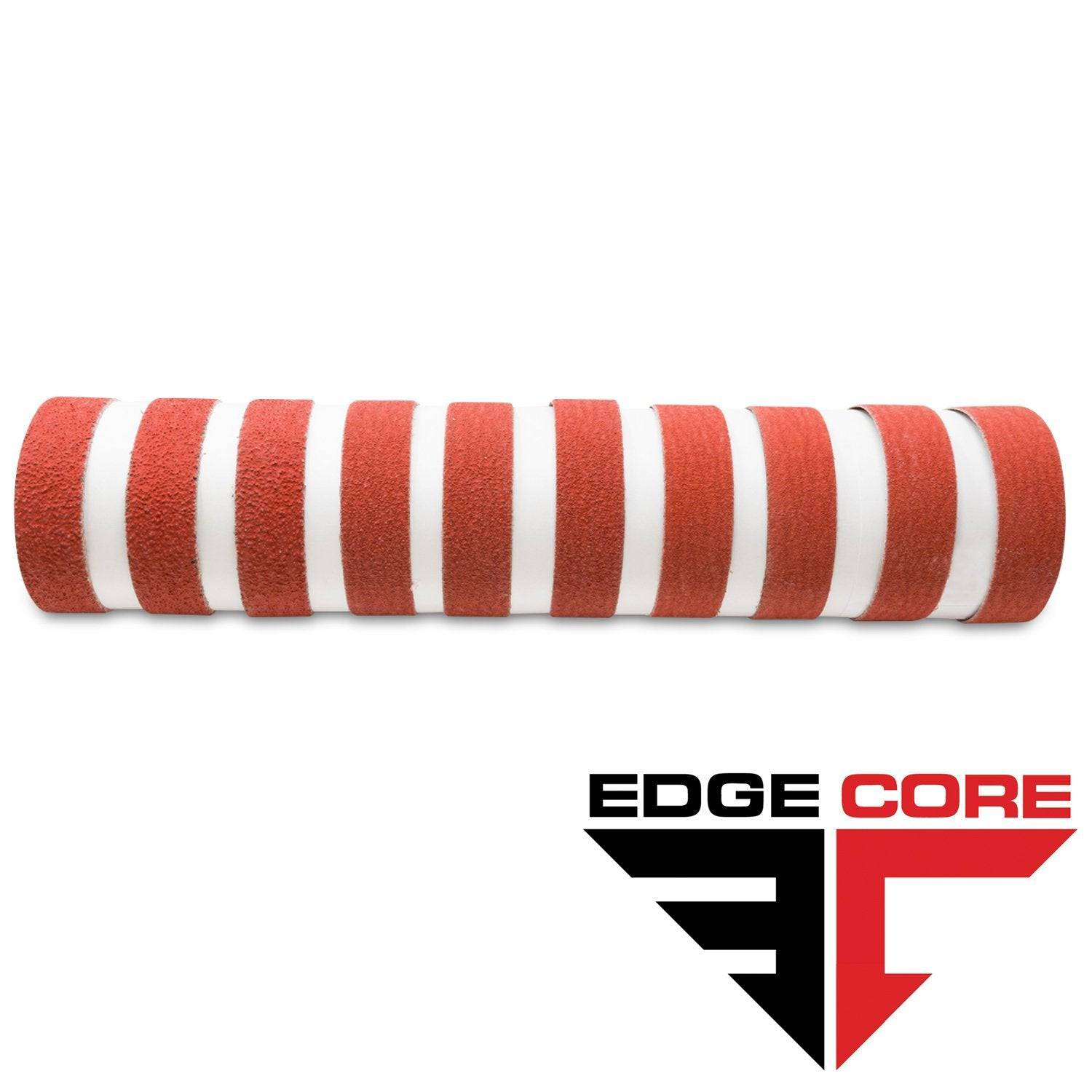
1 X 30 Inch Knife Makers Sanding Belts Assortment

1 x 42 Inch Knife Makers Sanding Belt Assortment
Shop By Product Category


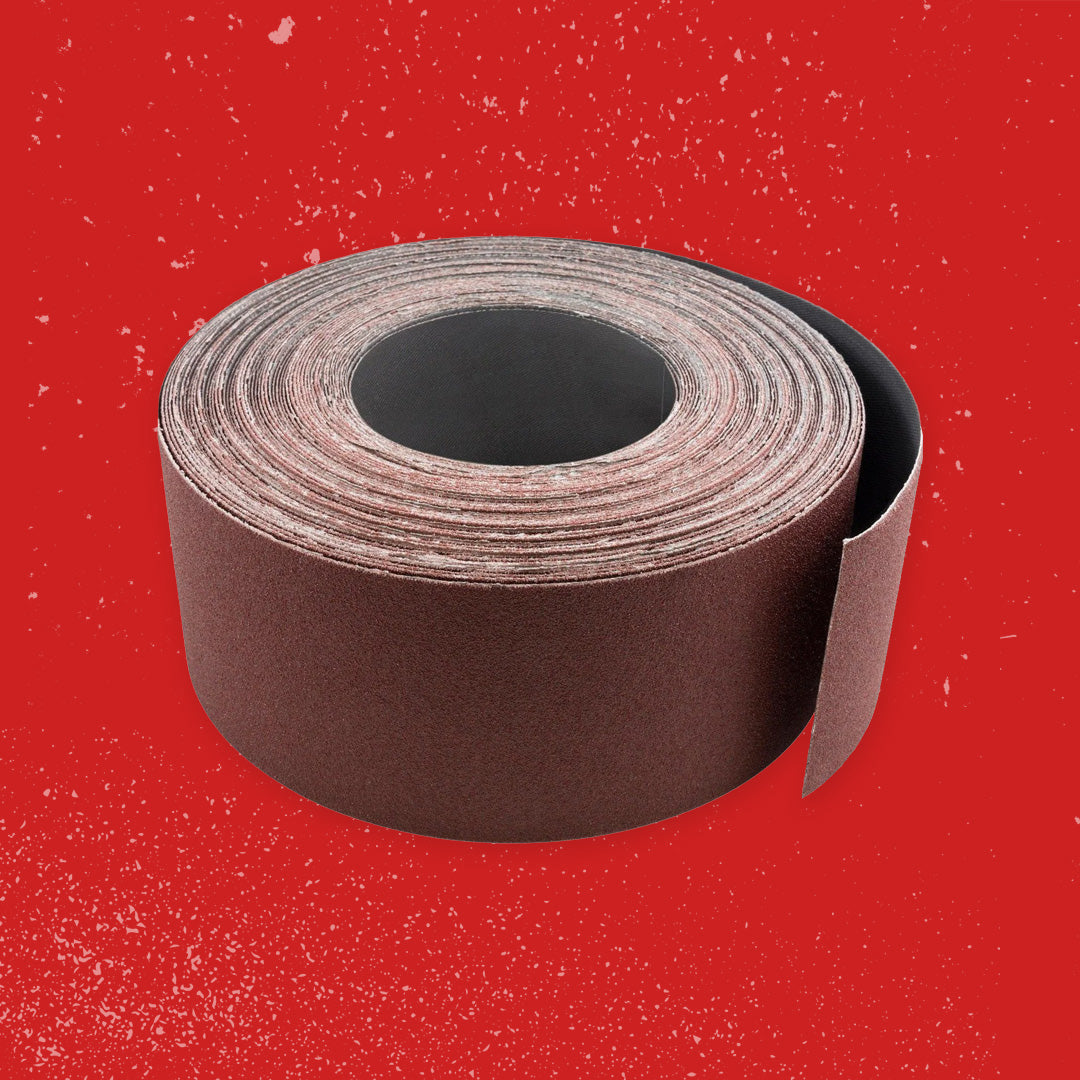


Why Choose Red Label?

